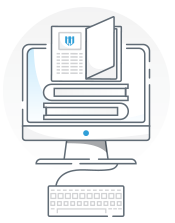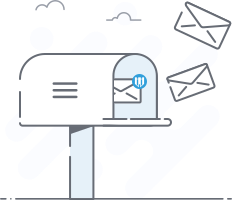The U.S. housing market has been booming as everyday Americans (and more than a few real estate investors) take advantage of record-low mortgage rates. As a result, now is an opportune time for many to become first-time homebuyers.
If you want to buy a house but your bank account balance doesn’t seem ready to cooperate, you may wonder if getting money for a down payment from your 401(k) is the way to go. Is borrowing (or withdrawing) from your retirement savings a smart way to achieve homeownership?
Let’s take a closer look at using a 401(k) to buy a house.
The origins of the 401(k) plan can be traced to the Revenue Act of 1978, which included a provision—Section 401(k)—that gave workers a tax-free way to defer compensation from bonuses or stock options. The law went into effect in 1980.
A year later, the Internal Revenue Service (IRS) issued rules allowing employees to contribute to their 401(k) plans through salary deductions, which led to the widespread rollout of 401(k) plans in the early 1980s. Today, 401(k) plans hold more than $28 trillion in assets, while traditional pensions, at least in the private sector, are increasingly rare.
Section 401(k) allowed account holders to receive a deduction on the money they invest into the plan and watch their contributions grow tax-free. The main intent of creating 401(k) accounts was to provide an incentive for employees to save for retirement.
Alas, U.S. Treasury regulations put a few limits on our ability to access those funds for day-to-day monetary needs. For example, you can’t withdraw funds until you reach age 59½ (age 55 if you have left or lost a job). If neither is the case, and you decide to take money out, you will trigger a 10 percent early withdrawal penalty on the amount withdrawn. In addition, 401(k) holders must pay regular income tax on the withdrawal, just as with any distribution from the account, whatever their age.
The answer to this question depends entirely on your current scenario and the down payment you want to put down on the house you are buying. You’ll need to calculate how much home you can afford (monthly mortgage payments, plus your down payment and closing costs.
Once you know how much money you need, before you can take a loan from your 401(k) you’ll need to know your vested balance. “Vested balance” refers to how much of the employer-sponsored plan you can take to a new job or withdraw from the 401(k) at any given point in time. That number does not necessarily equal the account’s total balance.
Let’s explain. While every dollar you contribute to a 401(k) is your money, you are not entitled to all of the company matching funds right away. Every year, a certain amount of the matching funds is “vested,” becoming part of your account’s balance. Once you are fully vested, you can then claim the entirety of your employer’s matching contributions.
As a caveat, every employer has different rules and regulations regarding the vesting period, so you may want to speak with your plan administrator if you have been with the company for fewer than six years (typically the maximum amount of time an employer may withhold a portion of their contributed dollar). The Internal Revenue Service (IRS) has a helpful entry on this topic.
First-time home buyers (without ownership interest within the most recent three years), have three options to get money from their 401(k):
Is purchasing a home a “hardship”? Generally, the IRS allows it if the money is urgently needed for the down payment on a principal residence. The IRS allows for a $10,000 withdrawal per person for those younger than 59½ to avoid the 10 percent penalty under specific circumstances (including first-time home purchase). You will have to pay income tax on the amount withdrawn; refer to the IRS website for more information.
The rules for loans are strict. The borrower (you) can borrow 50 percent of the vested 401(k) balance or a maximum of $50,000, whichever is lower.
Advantages to a 401(k) loan include:
The repayment schedule and the interest rate are usually similar to a bank loan. Typically, employees have five years to repay the loan, but different employers and plan administrators have different timelines.
Most plans charge an interest rate equal to the prime rate plus 1 percent. The interest is not paid to a lender (because the employee is borrowing his or her own money.) The interest charged is added to your 401(k) account.
Regulations for most 401(k) loans generally require a five-year amortizing repayment schedule. However, you can repay the loan faster without a penalty.
Most plans allow employees to pay back the loan through payroll deductions. However, these repayments are with after-tax dollars, not pre-tax dollars as with the original investments into the 401(k).
What if you lose your job? In that case, the loan will have to be repaid by the next federal tax return or it will be considered a withdrawal. (Prior to 2018 tax law modifications, participants with outstanding 401(k) loans and were laid off or fired only had 60 days to pay back the loans.) Then, you will be taxed on the sum at the full rate, plus the 10 percent penalty.
Take note: many plans won’t let borrowers make new contributions until the loan is repaid. So, this loan can be costly in terms of what you will not be saving and not receiving (the company match on contributions).
If your home purchase requires funds beyond the 401(k) loan options, you may also consider the hardship withdrawal. Be aware: some employer 401(k) plans require you to first take out a loan before seeking the hardship withdrawal.
Borrowing against a 401k plan is allowed by law, but that doesn’t mean your employer allows it. Many small businesses simply can't afford it. Even so, loans are a feature of most 401k plans. If offered, an employer must adhere to some very strict and detailed guidelines on making and administering them.
Employers can impose their own requirements on 401(k) loans, including:
About 90 percent of 401(k) contributors have access to loans, according to research conducted by the National Bureau of Economic Research (NBER). NBER also found that on average the amount borrowed with a new loan is about $7,800, while the average total amount borrowed (across all loans) is about $10,000.
About 40 percent of plans surveyed by NBER allow workers to take out two or more loans at once. Over the course of five years, NBER found that nearly 40 percent of plan participants took out funds from their 401(k).
Drawing funds from a 401(k) account can permanently set back your retirement savings. That’s because time value of money is critical to the growth of a portfolio. In other words, taking money out of a retirement account prevents interest from compounding. Be sure to read 401(K) Loans For Investment Property + Prohibited Transactions.
Many experts advise that it is best to build up other savings accounts before buying a house. Aspiring first-time homebuyers may even want to lower contributions to their 401(k) to save for a down payment instead.
Even with a small balance in a savings account, you may be able to qualify for a mortgage loan with a down payment smaller than the standard 20 percent. For example, there are a few federally subsidized loan programs. The Federal Housing Administration (FHA) and the Department of Veterans Affairs (VA) help first-time homebuyers and other qualified applicants achieve the goal of home ownership, for example.

Scott Royal Smith is an asset protection attorney and long-time real estate investor. He's on a mission to help fellow investors free their time, protect their assets, and create lasting wealth.

Ready to know more than your attorney? Join our community platform where you'll get immediate FREE access to all our best educational resources for real estate investors. Including 8 Masterclasses, group mentoring replays, and much, much more.
Join thousands of real estate investors in all 50 states as they enjoy exclusive content, special promotions, and behind-the-scenes access to me and my guests. No spam, ever. Just great stuff!
